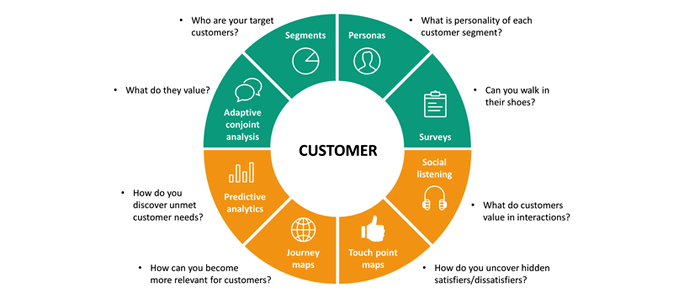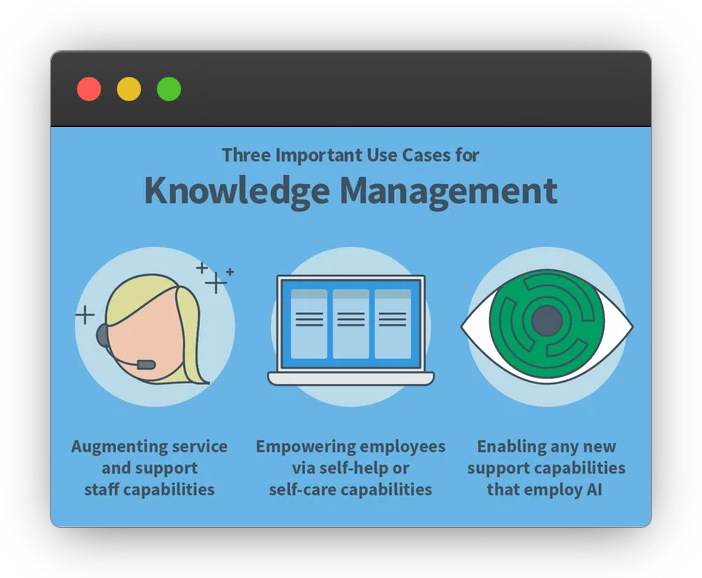The general idea that customer support is merely a cost center and cannot be a profit center is a common misconception. However, the unconventional truth is that customer support has the potential to drive profitability for a business instead of being considered a liability.
A well-executed customer support strategy can help you:
- increase customer retention and lifetime value
- bring more revenue by upselling and cross-selling to customers at the right time
- provide grade-A support experience that pockets you free good word-of-mouth and brand advocates
- optimize your costs via efficiency.
In this article, we explore how you can do just that for your own company by building a rock solid support team, transforming your customer support platform into a revenue generation hotspot, and building a customer-satisfaction-focused culture around profitability.
Let’s begin!
Building A Solid Foundation For Profitable Customer Support
Define Your Customer Support Goals
By clearly outlining objectives and OKRs for customer support, brands can align their best efforts to deliver top-notch support 24*7. And being laser-focused on specific outcomes helps you prioritize customer-centric strategies and optimize your support operations to improve your bottom line.
Evaluate the exact goals you want to go after, such as:
- improving customer satisfaction to build customer loyalty and positive word-of-mouth.
- reducing response time to ensure timely issue resolution, which demonstrates your commitment to satiating customer needs.
- increasing customer retention to drive long-term profitability by bringing repeat business.
Understand Your Customers’ Needs
Customer support is one of the best tools to grow your business. To provide the kind of customer support that earns you loyal customers (and positively impacts your bottom line), you need to have a deep understanding of their preferences, pain points, and expectations with your brand.

[Source]
- conducting thorough market research to uncover insights into target audience demographics, behaviors, and customer support preferences.
- actively collecting feedback through surveys, feedback forms, and social media to identify areas for improvement.
- utilizing customer data and analytics to identify patterns and common issues.
- strategically addressing pain points by improving response times.
- enhancing self-service options.
- providing proactive support.
Hire And Train The Right Support Team
Your customer support quality is as good as the team behind it. So, you cannot be casual, and must recruit and train customer support reps with specific qualities while providing them with ongoing development opportunities.
Here’s how you can do that:
- recruit Gen Z individuals with strong communication skills. Young adults are typically more tech-savvy and motivated.
- seek empathetic and patient support soldiers.
- prioritize problem-solving abilities.
- implement comprehensive training programs covering product knowledge and customer service best practices.
- encourage continuous training and skill development to adapt to evolving needs.
- build a supportive and collaborative environment through team meetings, feedback sessions, and mentorship programs to facilitate knowledge sharing and professional growth among reps.
Empowering Support Agents With Product Knowledge And Tools For Knowledge Management
Your support reps can only resolve your customers’ issues timely when they know your product inside and out. No customer wants to get on a call with a rep that is more or less clueless — which also lessens brand trust.

[Source]
- it leads to faster problem-solving, improved customer satisfaction, and strengthens the customer-agent relationship — which compels them to keep coming back to buy your product or services.
- well-versed agents can identify upselling opportunities, thereby increasing revenue.
- a robust knowledge management system ensures access to accurate information, avoiding confusion.
- comprehensive product knowledge resources aid in training and onboarding, enabling agents to assist customers effectively and quickly.
- sharing experiences and solutions through a knowledge management system allows team members to learn from each other and enhance their support skills.
Establishing Clear Communication Channels For Efficient Support
In 2023, since customers can buy from you via multiple channels, they also expect to receive support on all those channels.
That time is gone when you had to raise a ticket via an email, wait for an agent endlessly to respond, and maybe get your resolution on time.
Offering various communication channels is essential because:
- by providing phone, email, live chat, social media, helpdesk software, knowledge base and self-service options, you can cater to diverse customer preferences, spiking up the customer satisfaction.
- multiple support channels reduce response time(s) and allow seamless transitions between channels, ensuring consistent and personalized support at all times.
- empowering customers with self-service options like knowledge base(s) and FAQs reduces support requests and boosts overall efficiency
- Integration with NLU and AI in order to automate communication.
Implementing Proactive Outreach And Personalized Assistance
Personalizing customer interactions clearly indicates that you value their unique needs — leading to higher satisfaction and loyalty.

[Source]
Personalization also helps identify upselling opportunities by recommending relevant products or services based on past purchases. Plus, analyzing data allows proactive support, anticipating needs and increasing retention rates. And ultra-satisfied customers naturally become brand advocates and drive new dollars in.
Leveraging Customer Feedback For Continuous Improvement
Regularly collecting feedback from customers helps you understand where you’re going wrong, get ideas about how you can make the process more efficient, and make informed decisions from top to bottom regarding your customer support strategy.
Surveys provide direct insights into customer satisfaction and pain points, while social media monitoring tracks brand mentions and sentiments. Customer support analytics offer data on response times and interactions.
However, involving your support team is crucial. They have valuable frontline insights and can actively identify areas for improvement and implement solutions.
By incorporating feedback, you can continuously enhance the support experience, show customers their input matters, and close the loop by communicating actions taken.
Transforming Customer Support into A Revenue Generation Platform
Upselling And Cross-Selling Opportunities During Support Interactions
Brands can tap into the revenue potential of customer support by training support agents to correctly recognize, and leverage upselling and cross-selling opportunities.
Identifying relevant additional products or services that align with customer needs and recommending them during support conversations, you can increase revenue and customer lifetime value.
This approach not only enhances the customer experience by providing personalized suggestions but also strengthens customer relationships and thickens brand loyalty.
For example:
Let’s say you run an online store that sells refurbished mobile phones.
A customer contacts your support team to inquire about a display issue with the Samsung S22 they recently purchased. During the conversation, the rep identifies that the customer would benefit from adding a premium mobile cover or skin. So, he suggests buying a dbrand skin for enhanced protection.
Impressed by the personalized suggestion and recognizing the value in protecting their phone, the customer decides to purchase the suggested skin. This successful cross-sell generates additional revenue for you.
Not only did this interaction boost revenue, but it also enhanced the customer experience by providing a tailored recommendation and making them feel valued and cared-for.
Creating A Seamless Transition From Support To Sales
Businesses can enhance revenue generation and maximize the value extracted from each customer interaction by leveraging the trust built through support interactions, offering personalized recommendations, product demos, and providing a smooth handoff to the sales team.
By aligning support and sales functions, you can identify potential upselling and cross-selling opportunities during support interactions and smoothly transition customers into a sales conversation.
This seamless transition requires close collaboration between the support and sales teams, effective communication, and shared customer insights.
And just by making this small change, you can transform the customer support team into a revenue generation hotspot.
Turning Satisfied Customers Into Brand Advocates And Driving Referrals
When customers have a positive support experience and feel valued, they’re more likely to become brand advocates, sharing their positive experiences with others. These enthusiastic customers can drive referrals, bringing in new customers and increased MoM revenue.
To achieve this, the support team should focus on delivering exceptional service, exceeding customer expectations (the plain ‘ol under-promising and over-delivering strategy), and actively encouraging customers to spread the word.
By providing memorable support interactions, the support team instead of being a cost center, becomes a powerful source of revenue through word-of-mouth marketing and customer referrals.
Tracking And Analyzing Customer Support Metrics
By monitoring KPIs — such as customer satisfaction, response time, first contact resolution, and employee engagement, you can gain valuable insights into the effectiveness and efficiency of your support operations.
Understanding these metrics allows for targeted improvements and optimized resource allocation, resulting in improved customer experiences and higher revenue generation potential.
Moreover, tracking employee engagement metrics like satisfaction and performance indicators helps identify areas for development and motivation, leading to a more productive and customer-focused support team.
Aligning Customer-Centric Culture With Profits
Fostering Empathy And Active Listening Within The Support Team
When support agents demonstrate empathy, they create a positive and personalized experience for customers, rendering them not just satisfied but happy too.
Active listening helps agents understand customer needs and resolve issues effectively, reducing customer effort and increasing the likelihood of repeat business. This is important because if customers walk away with a bad taste in their mouths, their bad words for a company spread faster than any good review ever will.
Plus, empathetic support interactions build trust, leading to increased customer retention rates.
Prioritizing Customer Satisfaction As A Core Business Goal
When companies make customer satisfaction their top priority, they ensure delivering exceptional experiences and meeting customer needs.
As mentioned above, happy customers refer others to your business — expanding the customer base and increasing revenue. Moreover, prioritizing customer satisfaction helps companies identify areas for improvement, optimize their products and services, and stay ahead of competitors.
Provide the best service through and through, and your business would never be in trouble.
Aligning Support Efforts With Overall Business Strategies
When the support team understands and aligns their efforts with the broader business objectives, they can effectively contribute to your company’s success.
To do so, the team needs to integrate its support processes and goals with the overall business strategy.
Then, work closely with other departments — such as marketing and sales — to understand the company’s target audience, product offerings, and promotional campaigns. By doing so, they can better address customer inquiries, provide accurate information, and even identify upselling or cross-selling opportunities.
This alignment enables support teams to prioritize activities that have a direct impact on customer satisfaction, retention, and revenue generation. It also allows for effective resource allocation, streamlined workflows, and the identification of opportunities for cross-functional collaboration.
Final Words
It is essential for businesses to recognize the revenue-generating potential of customer support and shift their mindset from considering it as a cost center to viewing it as a strategic investment with exponential ROI.
By investing in well-trained support teams, empowering them with the right tools and resources, and aligning support efforts with business objectives, you can boost your bottom line by unleashing the profit potential of customer support.

